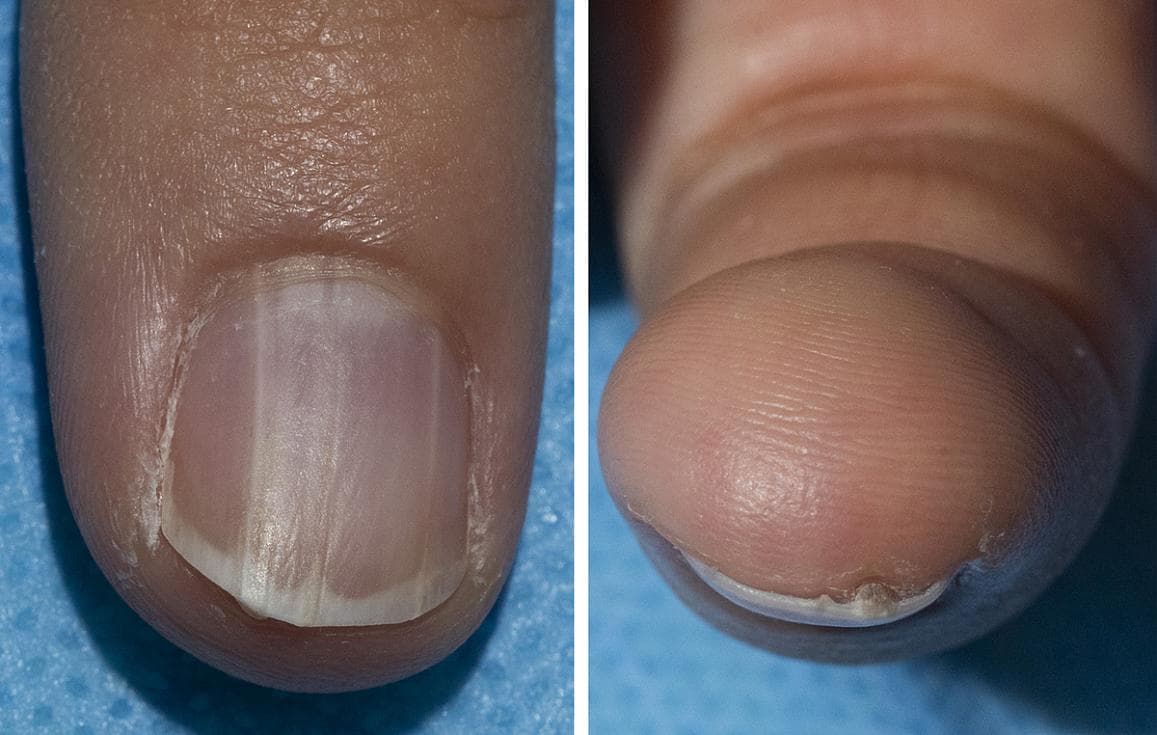NIH researchers suggest conducting nail evaluation of affected patients and at-risk family members
Maryland, USA: Scientists at the National Institutes of Health (NIH) have discovered that the presence of a benign nail condition may lead to the diagnosis of a rare inherited disorder that increases the risk of developing cancerous tumors of the skin, eyes, kidneys and the tissue that lines the chest and abdomen (e.g., the mesothelium). The condition, known as BAP1 tumor predisposition syndrome, is caused by mutations in the BAP1 gene, which normally acts as a tumor suppressor, among other functions. The findings are published in JAMA Dermatology and will be presented today at the Society for Investigative Dermatology Annual Meeting in Dallas.
Scientists happened upon the discovery while studying participants who were enrolled in a screening for BAP 1 variants at the NIH Clinical Center. As part of the study, a dermatology screening was performed at enrollment and annually for participants aged 2 and older. The cohort in the current study included 47 individuals with BAP1 tumor predisposition syndrome from 35 families.
“When asked about nail health during a baseline genetic assessment, a very astute patient reported that he had noticed subtle changes in his nails,” said co-lead author and genetic counselor Alexandra Lebensohn, M.S., of NIH’s National Cancer Institute (NCI). “His comment prompted us to systematically evaluate other participants for nail changes and uncover this new finding.”
Biopsies of the nail and underlying nail bed in several participants confirmed the investigators’ suspicion of a benign tumor abnormality known as an onychopapilloma. The condition causes a colored band (usually white or red) along the length of the nail, along with thickening of the nail underlying the color change and thickening at the end of the nail. It typically only affects one nail.
However, among study participants with known BAP1 tumor predisposition syndrome aged 30 and older, 88% had onychopapilloma tumors affect multiple nails. Researchers suggest that nail screening may be particularly valuable in a patient with a personal or family history of melanoma or other potential BAP1-associated malignancy.
“This finding is rarely seen in the general population, and we believe the presence of nail changes that suggest onychopapillomas on multiple nails should prompt consideration of a diagnosis of BAP1 tumor predisposition syndrome,” said Edward Cowen, M.D, head of Dermatology Consultation Services at NIH’s National Institute of Arthritis and Musculoskeletal and Skin Diseases (NIAMS).
“This discovery is an excellent example of how multidisciplinary teams and natural history studies can reveal insights about rare diseases,” said Raffit Hassan, M.D., co-senior author of the study and the Principal Investigator of the clinical protocol in which these patients were enrolled.
NIH news




